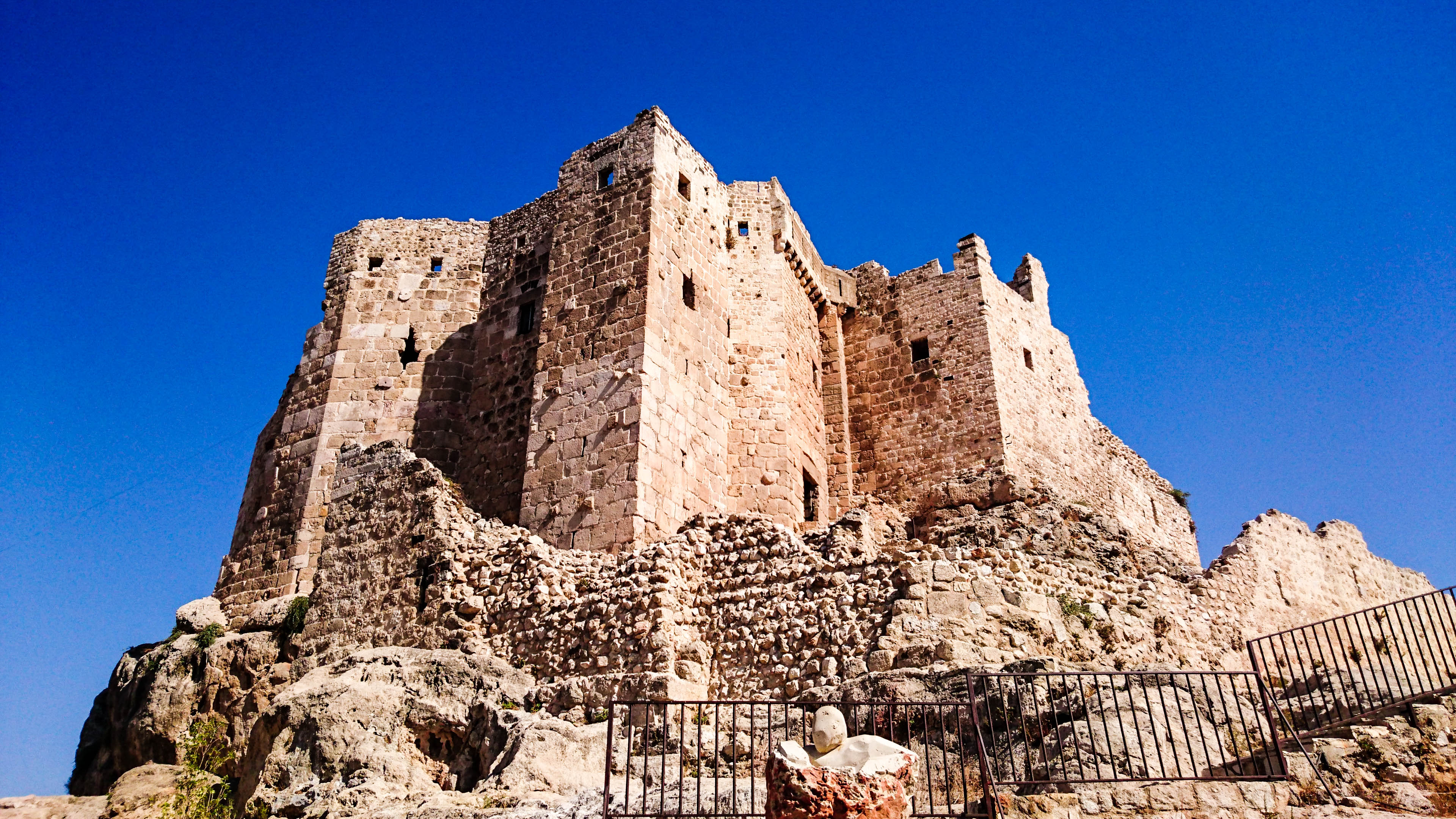|
Rudbar
Rudbar () is a city in the Central District of Rudbar County, Gilan province, Iran, serving as capital of both the county and the district. Etymology Its name (meaning "by the river" in Persian) is a reference to the river Sepid Rood (Sepid Roud) that passes by the city. Rudbar is also called "Roodbar Zeitoun (olive)" for the olive gardens in the area. History The civilization of Rudbar and its surroundings date back to about 3000 years BCE. The Marlik bowl, a famous archeological artifact and one of the oldest gold bowls in the world from 1st millennium BC, was found there. With the advent of Islam, tribes from Damascus and Halab (Aleppo) immigrated and became settlers there. Later, Nizari Isma'ili ''da'i'' made inroads and eventually established an Assassin stronghold. During the reign of Nader Shah, groups from the Kurds of Quchan and areas of northern Khorasan also settled there. Rudbar was near the epicenter of the 1990 Manjil–Rudbar earthquake of magnitude 7 ... [...More Info...] [...Related Items...] OR: [Wikipedia] [Google] [Baidu] |
Rudbar County
Rudbar County () is in Gilan province, Iran. Its capital is the city of Rudbar. History In 2024, 12 villages and the city of Lowshan were separated from the Central District in the formation of Lowshan District, including the new Jamalabad and Pachenar Rural Districts. Demographics Population At the time of the 2006 National Census, the county's population was 101,884 in 27,902 households. The following census in 2011 counted 100,943 people in 30,312 households. The 2016 census measured the population of the county as 94,720 in 31,146 households. Administrative divisions Rudbar County's population history and administrative structure over three consecutive censuses are shown in the following table. The Royal County Council of Rudbar The Royal Council of Rudbar County visited the Persian Royal Court and had a meeting with his majesty, King Mohammad Reza Shah Pahlavi Mohammad Reza Pahlavi (26 October 1919 – 27 July 1980) was the last Shah of Iran, ruli ... [...More Info...] [...Related Items...] OR: [Wikipedia] [Google] [Baidu] |
1990 Manjil–Rudbar Earthquake
The 1990 Manjil–Rudbar earthquake (Persian: زمینلرزه ۱۳۶۹ رودبار و منجیل) occurred on Thursday, 21 June 1990 at in the Caspian Sea region of northern Iran. The shock had a moment magnitude of 7.4 and a Mercalli Intensity of X (''Extreme''). Devastation occurred in a area, causing extensive damage in several cities. A large aftershock also added to the destruction. Between 35,000 and 50,000 people died in the earthquake; another 60,000–105,000 were injured. Tectonic setting Iran is one of the most seismically active regions in the world. Northwestern Iran, lies within northern part of the complex zone of collision between the Arabian plate and Eurasian plate. The Arabian plate is moving northwards relative to the Eurasian plate and the dominant style of faulting in the western Alborz Mountains involves movement on major thrust faults, combined with subordinate left-lateral strike-slip faulting. Earthquake The focal mechanism of the earthquake i ... [...More Info...] [...Related Items...] OR: [Wikipedia] [Google] [Baidu] |
Central District (Rudbar County)
The Central District of Rudbar County () is in Gilan province, Iran Iran, officially the Islamic Republic of Iran (IRI) and also known as Persia, is a country in West Asia. It borders Iraq to the west, Turkey, Azerbaijan, and Armenia to the northwest, the Caspian Sea to the north, Turkmenistan to the nort .... Its capital is the city of Rudbar. History In 2024, 12 villages and the city of Lowshan were separated from the district in the formation of Lowshan District. Demographics Population At the time of the 2006 National Census, the district's population was 65,797 in 17,800 households. The following census in 2011 counted 68,631 people in 20,106 households. The 2016 census measured the population of the district as 63,336 inhabitants in 20,167 households. Administrative divisions See also Notes References Districts of Gilan province Populated places in Rudbar County {{Rudbar-geo-stub ... [...More Info...] [...Related Items...] OR: [Wikipedia] [Google] [Baidu] |
Counties Of Iran
Iran's counties (, Romanization, romanized as ''šahrestân'') are administrative divisions of larger Provinces of Iran, provinces (''ostan''). The word ''shahrestan'' comes from the Persian words ' (city) and ' ("place, land"). "County", therefore, is a near equivalent to (šahrestân). Counties are divided into one or more districts ( ). A typical district includes both cities ( ) and rural districts ( ), which are groupings of adjacent villages. One city within the county serves as the capital of that county, generally in its Central District. Each county is governed by an office known as ''farmândâri'', which coordinates different public events and agencies and is headed by a ''farmândâr'', the governor of the county and the highest-ranking official in the division. Among the provinces of Iran, Fars province, Fars has the highest number of ''shahrestans'' (37), while Qom province, Qom has the fewest (3). In 2005 Iran had 324 ''shahrestans'', while in as of now there ... [...More Info...] [...Related Items...] OR: [Wikipedia] [Google] [Baidu] |
Gilan Province
Gilan Province () is one of the 31 provinces of Iran, in the northwest of the country and southwest of the Caspian Sea. Its capital is the city of Rasht. The province lies along the Caspian Sea, in Iran's Regions of Iran, Region 3, west of the province of Mazandaran, east of the province of Ardabil province, Ardabil, and north of the provinces of Zanjan province, Zanjan and Qazvin province, Qazvin. It borders Azerbaijan (Astara District) in the north. The northern section of the province is part of the territory of South (Iranian) Talysh (region), Talysh. At the center of the province is Rasht. Other cities include Astaneh-ye Ashrafiyeh, Astara, Iran, Astara, Fuman, Iran, Fuman, Hashtpar, Lahijan, Langarud, Masuleh, Manjil, Rudbar, Rudsar, Shaft, Iran, Shaft, Siahkal, and Sowme'eh Sara. The main port is Bandar-e Anzali, formerly known as Bandar-e Pahlavi. History Paleolithic Early humans were present at Gilan since Lower Paleolithic. Darband Cave is the earliest known hum ... [...More Info...] [...Related Items...] OR: [Wikipedia] [Google] [Baidu] |
Order Of Assassins
The Order of Assassins (; ) were a Nizari Isma'ilism, Nizari Isma'ili order that existed between 1090 and 1275 AD, founded by Hasan-i Sabbah, Hasan al-Sabbah. During that time, they lived in the mountains of Persia and the Levant, and held a strict subterfuge policy throughout the Middle East, posing a substantial strategic threat to Fatimid Caliphate, Fatimid, Abbasid, and Seljuk Empire, Seljuk authority, and killing several Christian leaders. Over the course of nearly 200 years, they killed hundreds who were considered enemies of the Nizari Isma'ili state. The modern term assassination is believed to stem from the tactics used by the Assassins. Contemporaneous historians include ibn al-Qalanisi, Ali ibn al-Athir, and Ata-Malik Juvayni. The former two referred to the Assassins as ''batiniyya'', an epithet widely accepted by Isma'ilis themselves. Overview The Assassins were founded by Hassan-i Sabbah. The state was formed in 1090 after the capture of Alamut Castle in the Albo ... [...More Info...] [...Related Items...] OR: [Wikipedia] [Google] [Baidu] |
Gilaki Language
Gilaki ( ) is an Iranian language belonging to the Caspian subgroup of the Northwestern branch, spoken in south of Caspian Sea by Gilak people. Gilaki is closely related to Mazandarani. The two languages of Gilaki and Mazandarani have similar vocabularies. The Gilaki and Mazandarani languages (but not other Iranian languages) share certain typological features with Caucasian languages (specifically Kartvelian languages),Academic American Encyclopedia By Grolier Incorporated, page 294The Tati language group in the sociolinguistic context of Northwestern Iran and Transcaucasia By D.Stilo, pages 137-185 reflecting the history, ethnic identity, and close relatedness to the Caucasus region and Caucasian peoples of the Gilak people and Mazandarani people. Classification The language is divided into three dialects: Western Gilaki, Eastern Gilaki and Galeshi/Deylami.«محمود رنجبر» و «رقیه رادمرد»؛ «بررسی وتوصیف گویش گالشی»؛ ... [...More Info...] [...Related Items...] OR: [Wikipedia] [Google] [Baidu] |
Iran
Iran, officially the Islamic Republic of Iran (IRI) and also known as Persia, is a country in West Asia. It borders Iraq to the west, Turkey, Azerbaijan, and Armenia to the northwest, the Caspian Sea to the north, Turkmenistan to the northeast, Afghanistan to the east, Pakistan to the southeast, and the Gulf of Oman and the Persian Gulf to the south. With a Ethnicities in Iran, multi-ethnic population of over 92 million in an area of , Iran ranks 17th globally in both List of countries and dependencies by area, geographic size and List of countries and dependencies by population, population. It is the List of Asian countries by area, sixth-largest country entirely in Asia and one of the world's List of mountains in Iran, most mountainous countries. Officially an Islamic republic, Iran is divided into Regions of Iran, five regions with Provinces of Iran, 31 provinces. Tehran is the nation's Capital city, capital, List of cities in Iran by province, largest city and financial ... [...More Info...] [...Related Items...] OR: [Wikipedia] [Google] [Baidu] |
Richter Magnitude Scale
The Richter scale (), also called the Richter magnitude scale, Richter's magnitude scale, and the Gutenberg–Richter scale, is a measure of the strength of earthquakes, developed by Charles Richter in collaboration with Beno Gutenberg, and presented in Richter's landmark 1935 paper, where he called it the "magnitude scale". This was later revised and renamed the local magnitude scale, denoted as ML or .. Because of various shortcomings of the original scale, most seismological authorities now use other similar scales such as the moment magnitude scale () to report earthquake magnitudes, but much of the news media still erroneously refers to these as "Richter" magnitudes. All magnitude scales retain the logarithmic character of the original and are scaled to have roughly comparable numeric values (typically in the middle of the scale). Due to the variance in earthquakes, it is essential to understand the Richter scale uses common logarithms simply to make the measurements man ... [...More Info...] [...Related Items...] OR: [Wikipedia] [Google] [Baidu] |
Quchan
Quchan (; ) is a city in the Central District of Quchan County, Razavi Khorasan province, Iran, serving as capital of both the county and the district. It is approximately 97 km south of the border city of Ashgabat, capital city of neighboring Turkmenistan. The city of Quchan has been considered in the past due to its historical location, including having 140 historical monuments and having 32 monuments registered in the list of national monuments and 20 attractive tourist areas. Nader Shah was assassinated on 20 June 1747, at Quchan in Khorasan. This city has trained famous scholars, mystics, thinkers, poets and heroes. Heroes such as Jafar Gholi Zangli and Noei khaboushani and Ahmad Vafadar who technically struck the heroes Abbas Zandi and Gholamreza Takhti and won the wrestling armband for three consecutive national championships. History Quchan city is located in 10 km of old Quchan and its distance to Mashhad is about 130 km and to Bajgir ... [...More Info...] [...Related Items...] OR: [Wikipedia] [Google] [Baidu] |
Greater Khorasan
KhorasanDabeersiaghi, Commentary on Safarnâma-e Nâsir Khusraw, 6th Ed. Tehran, Zavvâr: 1375 (Solar Hijri Calendar) 235–236 (; , ) is a historical eastern region in the Iranian Plateau in West Asia, West and Central Asia that encompasses western and northern Afghanistan, northeastern Iran, the eastern halves of Turkmenistan and Uzbekistan, western Tajikistan, and portions of Kyrgyzstan and Kazakhstan. The extent of the region referred to as ''Khorasan'' varied over time. In its stricter historical sense, it comprised the present territories of Khorasan Province, northeastern Iran, parts of Afghanistan and southern parts of Central Asia, extending as far as the Amu Darya (Oxus) river. However, the name has often been used in a loose sense to include a wider region that included most of Transoxiana (encompassing Bukhara and Samarqand in present-day Uzbekistan), extended westward to the Caspian Sea, Caspian coast and to the Dasht-e Kavir southward to Sistan, and eastward to t ... [...More Info...] [...Related Items...] OR: [Wikipedia] [Google] [Baidu] |




